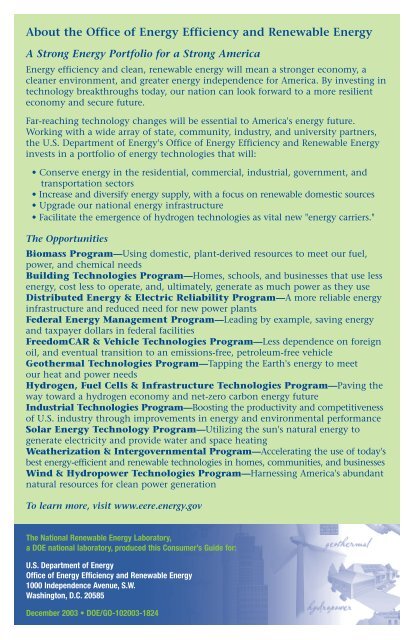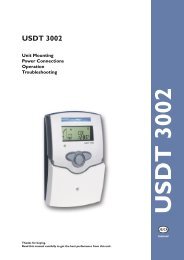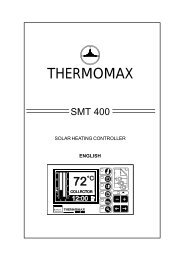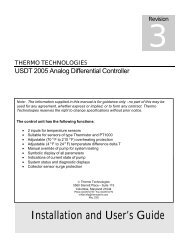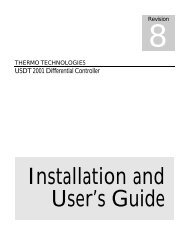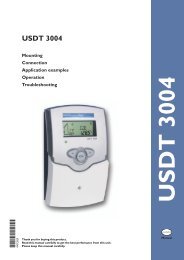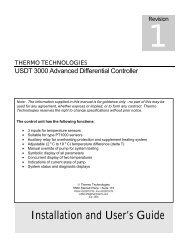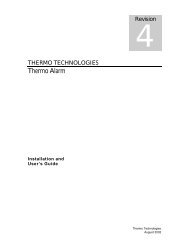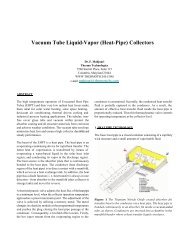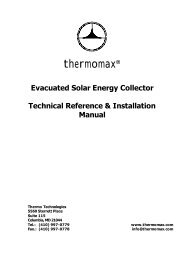Heat Your water with the Sun - Thermomax Technologies
Heat Your water with the Sun - Thermomax Technologies
Heat Your water with the Sun - Thermomax Technologies
Create successful ePaper yourself
Turn your PDF publications into a flip-book with our unique Google optimized e-Paper software.
About <strong>the</strong> Office of Energy Efficiency and Renewable Energy<br />
A Strong Energy Portfolio for a Strong America<br />
Energy efficiency and clean, renewable energy will mean a stronger economy, a<br />
cleaner environment, and greater energy independence for America. By investing in<br />
technology breakthroughs today, our nation can look forward to a more resilient<br />
economy and secure future.<br />
Far-reaching technology changes will be essential to America's energy future.<br />
Working <strong>with</strong> a wide array of state, community, industry, and university partners,<br />
<strong>the</strong> U.S. Department of Energy's Office of Energy Efficiency and Renewable Energy<br />
invests in a portfolio of energy technologies that will:<br />
• Conserve energy in <strong>the</strong> residential, commercial, industrial, government, and<br />
transportation sectors<br />
• Increase and diversify energy supply, <strong>with</strong> a focus on renewable domestic sources<br />
• Upgrade our national energy infrastructure<br />
• Facilitate <strong>the</strong> emergence of hydrogen technologies as vital new "energy carriers."<br />
The Opportunities<br />
Biomass Program—Using domestic, plant-derived resources to meet our fuel,<br />
power, and chemical needs<br />
Building <strong>Technologies</strong> Program—Homes, schools, and businesses that use less<br />
energy, cost less to operate, and, ultimately, generate as much power as <strong>the</strong>y use<br />
Distributed Energy & Electric Reliability Program—A more reliable energy<br />
infrastructure and reduced need for new power plants<br />
Federal Energy Management Program—Leading by example, saving energy<br />
and taxpayer dollars in federal facilities<br />
FreedomCAR & Vehicle <strong>Technologies</strong> Program—Less dependence on foreign<br />
oil, and eventual transition to an emissions-free, petroleum-free vehicle<br />
Geo<strong>the</strong>rmal <strong>Technologies</strong> Program—Tapping <strong>the</strong> Earth's energy to meet<br />
our heat and power needs<br />
Hydrogen, Fuel Cells & Infrastructure <strong>Technologies</strong> Program—Paving <strong>the</strong><br />
way toward a hydrogen economy and net-zero carbon energy future<br />
Industrial <strong>Technologies</strong> Program—Boosting <strong>the</strong> productivity and competitiveness<br />
of U.S. industry through improvements in energy and environmental performance<br />
Solar Energy Technology Program—Utilizing <strong>the</strong> sun's natural energy to<br />
generate electricity and provide <strong>water</strong> and space heating<br />
Wea<strong>the</strong>rization & Intergovernmental Program—Accelerating <strong>the</strong> use of today's<br />
best energy-efficient and renewable technologies in homes, communities, and businesses<br />
Wind & Hydropower <strong>Technologies</strong> Program—Harnessing America's abundant<br />
natural resources for clean power generation<br />
To learn more, visit www.eere.energy.gov<br />
The National Renewable Energy Laboratory,<br />
a DOE national laboratory, produced this Consumer’s Guide for:<br />
U.S. Department of Energy<br />
Office of Energy Efficiency and Renewable Energy<br />
1000 Independence Avenue, S.W.<br />
Washington, D.C. 20585<br />
December 2003 • DOE/GO-102003-1824


